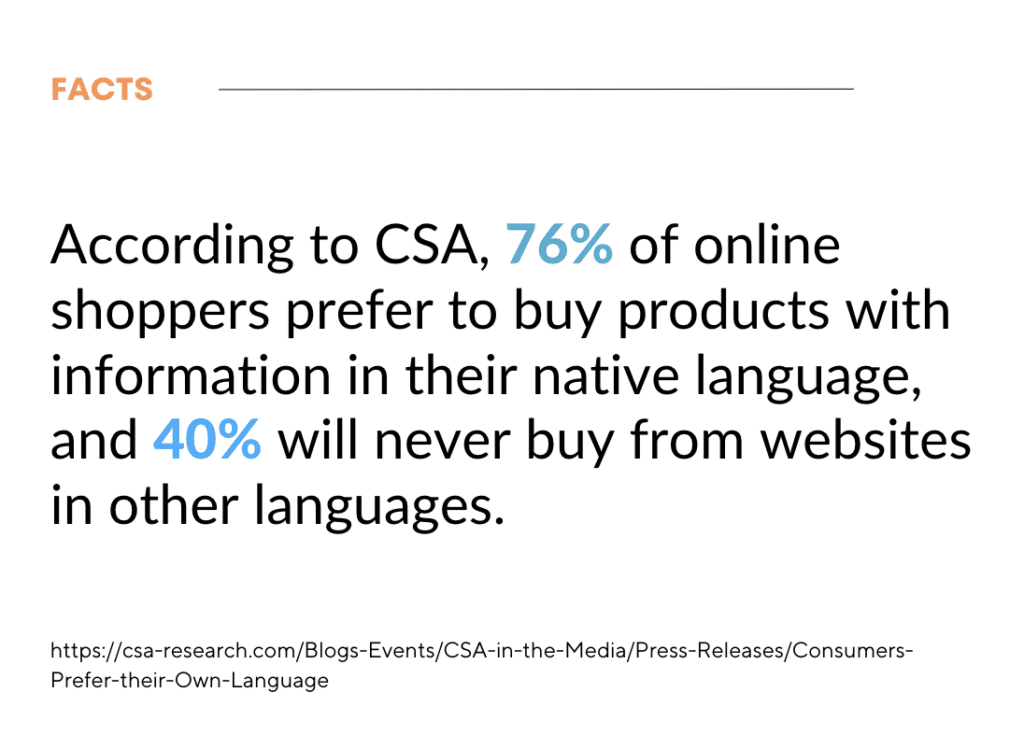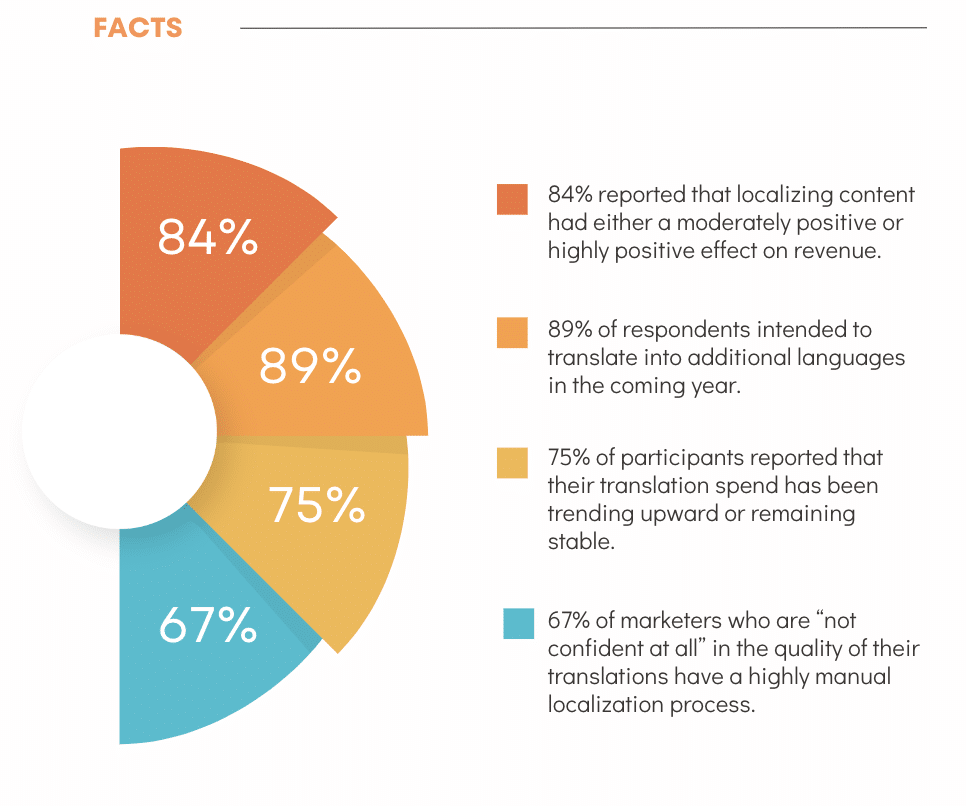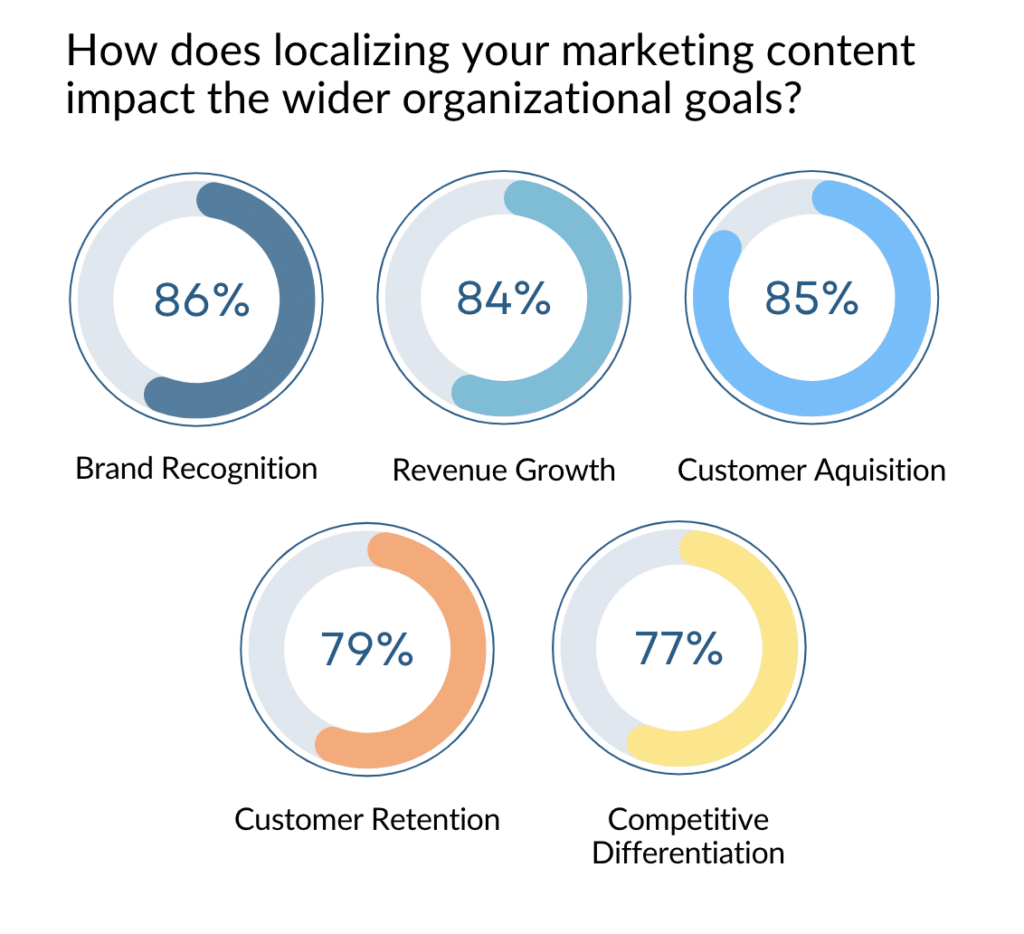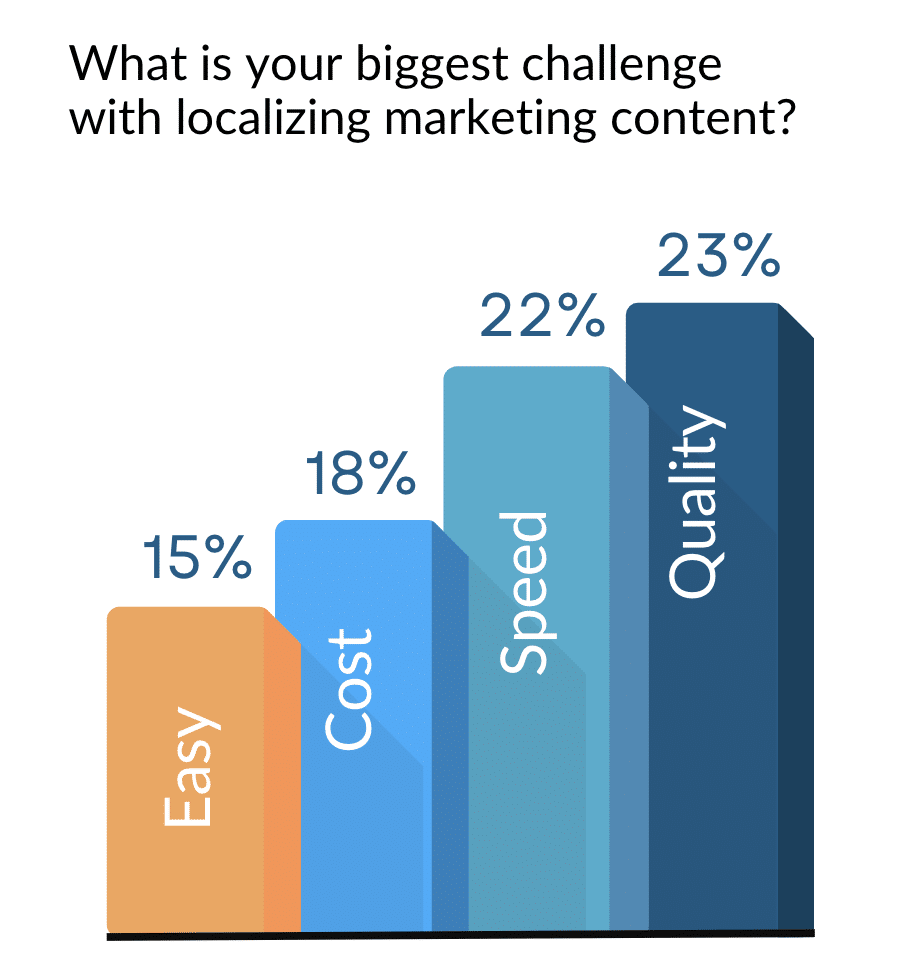Video localization is adapting a video's content and language to suit a target audience's cultural,…

Global Trends in Marketing Localization for 2023: Enhancing Engagement and Driving Revenue Growth
Global Trends in Marketing Localization for 2023: Global marketers today face an ever-increasing demand for content across multiple channels. From website copy and product listings to e-books, videos, and paid promotions, the pressure to deliver on-brand content at speed and scale has reached unprecedented levels. International brands, in particular, face the additional challenge of localizing content into multiple languages while ensuring its effectiveness in engaging and converting customers. A survey conducted by Unbabel sheds light on the key trends and strategies that global marketers employ to overcome these hurdles and achieve success in marketing localization.
Investing in Translation for Marketing Localization

According to the survey, most global marketers recognize the positive impact of localizing content on revenue growth. An overwhelming 84% of respondents reported that localizing content had either a moderately positive or highly positive effect on their revenue. As a result, marketers are increasing their investment in translation and localization efforts, and 89% of respondents expressed their intention to translate into additional languages within the coming year. Moreover, 75% of participants reported that their translation spend has been trending upward or remaining stable. This increased investment is directed towards various areas, including top-of-the-funnel (ToFu) content such as paid ads, email marketing, blogs, eBooks, and white papers.

Machine Translation
Traditionally, machine translation (MT) has been associated with compromises in quality. However, the survey findings indicate a shift in the perception of MT among marketers. Thirty-nine percent of respondents revealed that they are utilizing machine translation as part of their localization strategy, and a remarkable 83% of those using MT expressed confidence in the quality of their translations. This shift can be attributed to advancements in MT technology, which have improved output quality, making it more viable for creative marketing content. Furthermore, the need for scalable solutions, as brands expand into new markets and languages, has fueled the adoption of MT. The demand for machine translation has grown remarkably, increasing by 124% over the past five years.
Marketing Localization Challenges and Revenue Growth
While localization presents its share of challenges, global marketers are rising to the occasion and leveraging its potential for revenue growth. The survey revealed that localizing search engine optimization (SEO) has become a significant focus for marketers. Forty-one percent of respondents stated they are localizing SEO for all their markets, while another 40% are for select markets. This emphasis on SEO localization stems from the realization that creating engaging content is only possible if customers find it. In addition to SEO, marketers are also adapting imagery, brand terminology, and tone of voice to cater to diverse markets. The survey underscores the correlation between localization efforts and returns on investment (ROI), further emphasizing the importance of investing in localization strategies.

Streamlining Localization Processes for Better Results
Despite the benefits of localization, marketers need help maintaining translation quality. Highly manual localization processes have been identified as a critical factor affecting quality. Marketers must streamline and optimize their localization processes to overcome this hurdle, seeking scalable and automated solutions. The survey findings demonstrate that companies in the early stages of implementing Language Operations, which combines artificial intelligence with human translation expertise, are experiencing higher-quality outcomes.

Incorporating humans in the loop alongside machine translation can significantly enhance the quality and effectiveness of translations. While machine translation has made remarkable strides in recent years, human involvement adds an invaluable layer of expertise, cultural nuance, and context comprehension that machines may struggle to replicate. Human linguists possess the ability to understand the intricacies of language, idiomatic expressions, and cultural sensitivities, ensuring that translated content resonates with target audiences on a deeper level. By harnessing the power of human involvement in conjunction with machine translation, businesses can achieve a harmonious balance between efficiency and accuracy, ultimately elevating the overall success of marketing localization efforts.
The Latest Hybrid Video Localization Technology
Next-Generation hybrid video localization is already here. Advanced hybrid AI-human technology can expand business reach by ensuring brand security and delivering human-accurate results with quality controls that machines can not guarantee at unprecedented speeds. Unlike purely machine-based solutions that can not detect tone, inflection, cultural relevancy, advanced terminology, accented speakers, or multi-sound environments, hybrid technology captures the speed of machines with human oversight to guarantee quality output. Professional editing ensures that the localized content aligns with your brand’s tone and style, giving you peace of mind. It is easier than ever to transcribe and translate your media content and generate localized voice tracks for different markets, making your content accessible to international audiences without language barriers.
Marketing Localization for 2023 and Beyond
Global marketers are navigating the challenges of delivering localized content at scale and speed. The survey conducted by Unbabel highlights the increasing investment in translation and localization efforts, focusing on expanding into additional languages and adapting content for various markets. Delivering multilingual content to convert customers across multiple channels is critical to marketing success in 2023 and beyond. Marketers should focus on the three pillars of quality multilingual experiences: scalability, automation, and human expertise.
The embrace of machine translation and its improving quality reshape the localization landscape. Localization is not only driving revenue growth but also enhancing engagement with customers across multiple channels. Marketers are urged to optimize their localization processes, leveraging scalable and automated solutions. By staying attuned to these global trends in marketing localization, businesses can establish a solid international presence and achieve their broader business goals.
***
About the Survey
 The article presents findings from a survey conducted by Unbabel, which involved over 1,600 global marketers from eight countries. The article discusses global trends in marketing localization for 2023. It highlights global marketers’ challenges in delivering on-brand content at speed and scale, translating assets into multiple languages, and adapting them for different target audiences.
The article presents findings from a survey conducted by Unbabel, which involved over 1,600 global marketers from eight countries. The article discusses global trends in marketing localization for 2023. It highlights global marketers’ challenges in delivering on-brand content at speed and scale, translating assets into multiple languages, and adapting them for different target audiences.
***
Captivate Global Audiences with Advanced Video Localization Technology

Video Localization Technology: In today’s digital era, reaching global audiences is crucial for businesses and content creators. However, language barriers can hinder the effectiveness of media content in resonating with international viewers. That’s where cielo24’s advanced hybrid AI-human video localization technology bridges the gaps to offer a solution that captures global audiences while protecting your brand. Read More >>



